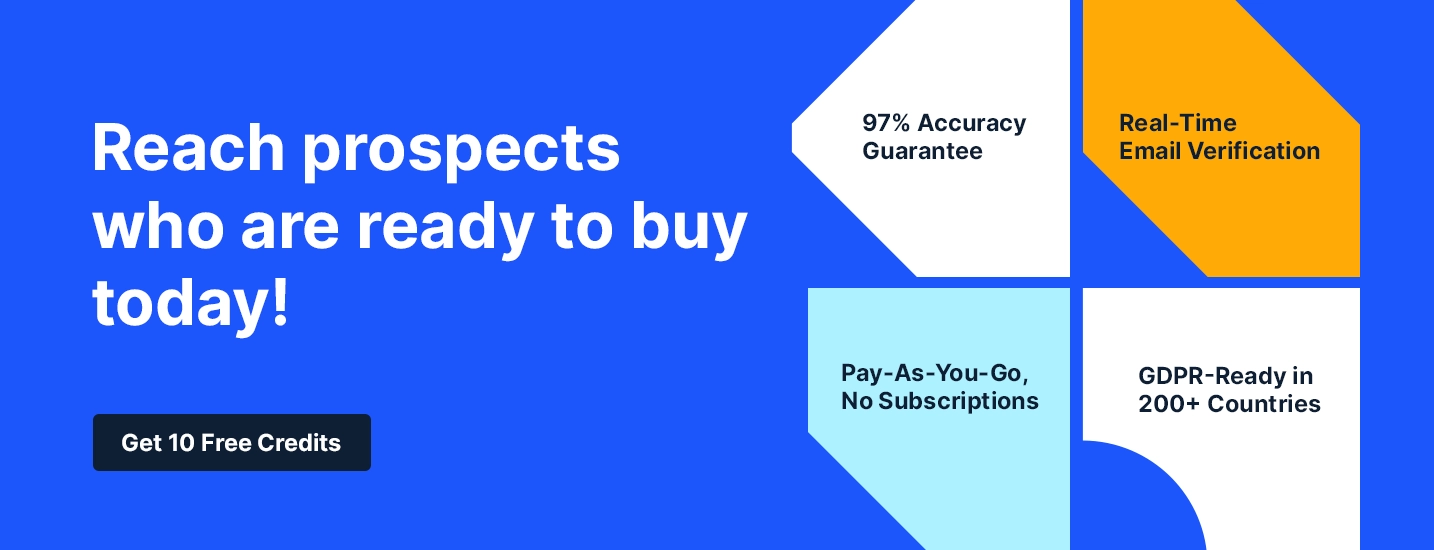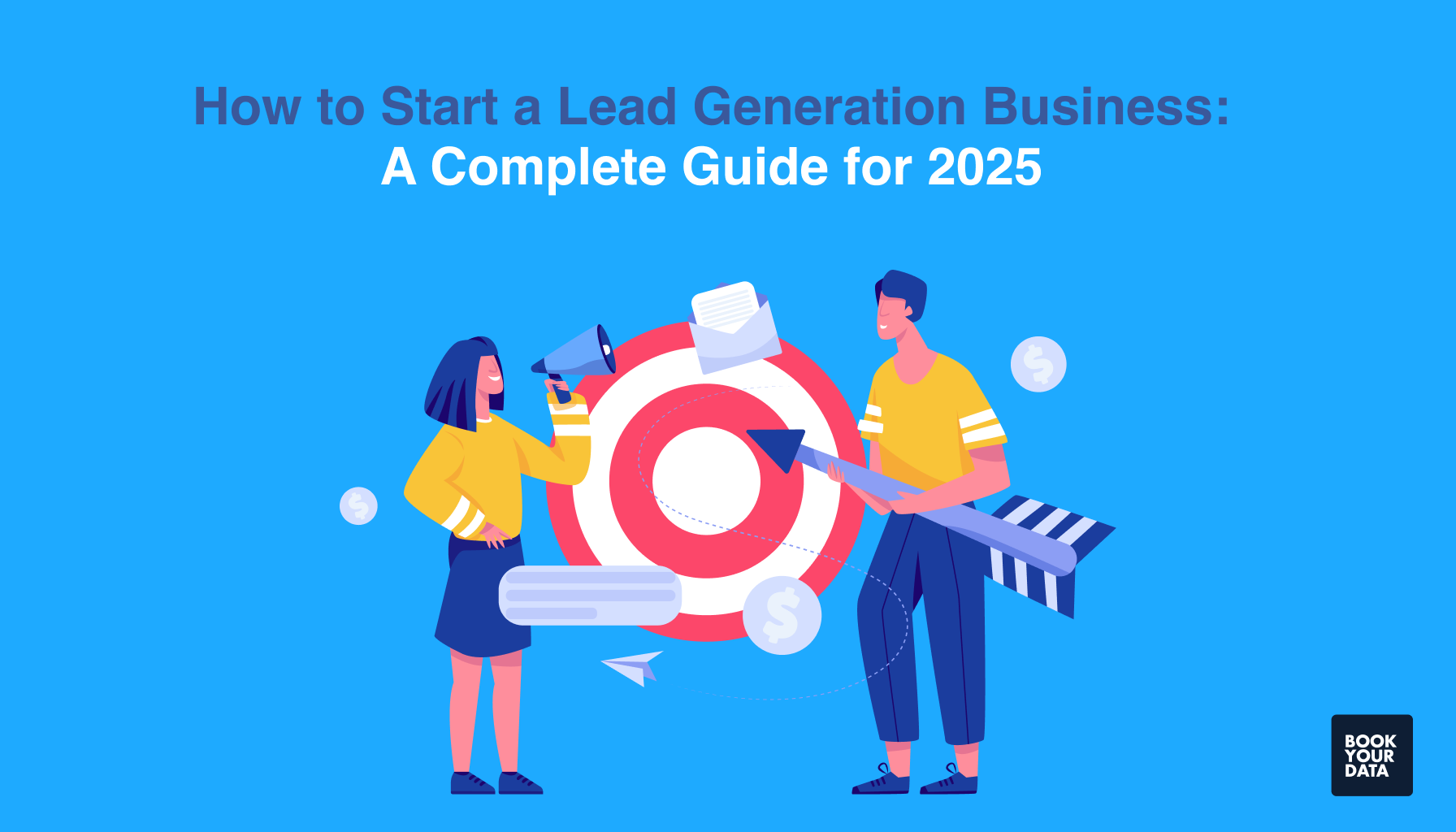9 Powerful Outbound Lead Generation Strategies to Boost Sales
You probably already know all you need to about inbound lead generation: a prospect calls or emails you, you answer their questions, and that’s basically it. Outbound lead generation – deliberately attracting sales leads from organizations you’ve never had contact with before – is a whole different ball game.
In this article, you will discover:
- Explanation of Outbound Lead Generation
- The Difference between Outbound vs. Inbound Lead Generation
- 9 Proven Strategies for Outbound Lead Generation
- Outbound Lead Generation Benefits
- Key Points about Lead Generation for Sales
- FAQs about Outbound Lead Generation to Increase Sales
Learning how to engage contacts through various channels using outbound lead generation techniques can be a lifelong process. So, let’s start from the basics and, at every stage, think a little about how these concepts can be applied within your business strategy, whether your company is large or small.
What is Outbound Lead Generation?

Outbound lead generation refers to a set of tactics meant to kick-start the sales process by contacting new prospects directly. Ways of doing so include cold calling and email outreach to a carefully defined target audience.
Importantly, an outbound strategy that actually converts prospects into clients typically focuses on providing them with value – information, buyer’s incentives, etc. – while gaining and increasing their interest. Your sales team must also be ready to handle follow-up tasks like fielding an increased number of phone calls in order to nudge new leads down the sales pipeline.
Designing and implementing a successful outbound campaign can get complex. Fortunately, there are several B2B lead generation companies that can help you. They may, for instance, help you define an ideal customer profile, reach out to prospects on your behalf, and – crucially – measure campaign effectiveness so you can spend your marketing budget wisely.
What Is the Importance of Outbound Lead Generation?
Depending on your industry, relying on advertising, content marketing, and other inbound methods to make people show up at your door may not cut it. To place this statement in context, almost 20% of marketers consider outbound marketing to be not just useful but crucial to their business. Here’s why:
- Proactive Approach: A strategy that purposely identifies suitable leads and targets potential clients means improved sales compared to waiting for customers to turn up on their own.
- Targeted Outreach: By addressing a specific audience, you can increase conversion rates by going after the most qualified leads. A skilled lead generation company can help to identify these.
- Immediate Results: An outbound strategy, being sales-driven, markets directly to potential leads and not just the world at large. These prospects are typically further down the sales funnel and require less nurturing to become paying clients.
- Complementary to Inbound Strategies: Outbound doesn’t have to be all-or-nothing. Outbound marketing can reach prospects for new business when they haven’t responded to the inbound approach.
Outbound vs. Inbound Lead Generation Explained
Inbound and outbound marketing strategies can be highly complementary. For example, cold calling is most successful when inbound tactics have already created awareness of your product.
Understanding how these two styles of marketing produce qualified leads for your sales team to follow up on requires an appreciation of the differences between them. The following table gives you an idea of how each measures up against the other:
In general, outbound marketing engages with the target audience directly, while the inbound approach nurtures a broader pool of potential customers without first generating specific sales leads.
9 Proven Strategies for Outbound Lead Generation

The main difficulty with outreach-focused campaigns is that, during the initial pitch, someone will usually have a low level of trust in your brand and its products. You therefore need to use proven techniques to build engagement and turn prospects into customers:
Cold Emailing
While whole books have been written on how to cold-email effectively, most agree that it’s important to personalize your message depending on your customer’s industry, the kind of solution they’re looking for, their role within their company, etc. It’s also essential to follow up on initial contacts: 55% of buyer inquiries are generated by messages that build on any interest the first may have generated.
Cold Calling
Cold calls, while more time-consuming than emails, can strike a good balance between intrusiveness and responsiveness. In order for your sales team to be prepared for each call, it’s essential to research each of the companies you plan to contact in advance and determine how you can add value to their operations.
For example, if you’re a SaaS company, generated leads may include information like the prospect’s employee count, existing infrastructure, estimated IT spend, and so forth. Armed with this information, the representative selling to potential leads can pitch products and services aligned with the customer’s needs.
Social Media Approach
One of the benefits of using a list-building service is that these often provide information beyond basic email addresses. If the organization you wish to convert into a customer, or influential individuals within that organization, has social media accounts, you may choose to reach out to them on these platforms.
This strategy often includes paid ads run on Facebook, TikTok, or whatever service your prospective clients tend to use. Once your brand has gained some exposure, you can pursue more direct, relationship-building avenues like commenting on prospects’ posts or utilizing paid influencers. However, make sure you choose the right social media platforms in this lead generation process. These platforms should ideally be the ones that your target audience uses frequently or prioritizes over others.
Pay-per-Click Campaigns
PPC advertising is cost-effective in that it’s targeted at exactly those people who are already interested in products or services like your own. Even so, it can be rather pricey and is best used as one prong of a multi-channel strategy aimed at generating leads online.
Referral Marketing
Applicable to both B2C and B2B lead generation, this simply means encouraging current clients to recommend your company to others. Incentives may include discounts or special offers.
Reach Out to Multiple Channels
Your efforts along various avenues both support one another and collectively cast a wider net. While cold emails can generate good results, you shouldn’t be blind to social and other forms of outreach.
While this article focuses primarily on online lead-generation tools and methods, there’s no reason not to get creative. Old-fashioned networking with industry professionals in a real-world setting, for instance, often sets the stage for an appointment with a new customer.
LinkedIn Outreach
Used for anything from recruitment to building personal brands, LinkedIn is also useful for marketing. Almost two-thirds of respondents in a recent survey indicated that they’ve made a sale over this professional social media platform.
While you can reach out to prospective clients using LinkedIn groups and direct messages, you can also use it to compile a list of names you want to contact. An email lookup tool like that offered by BookYourData can then convert these into email addresses with a 97%+ accuracy rate.
[CTA1]
Apply Content Syndication
If you have a collection of high-quality written articles relevant to your industry – whitepapers, how-to guides, case studies, etc. – you have the option of re-publishing these pieces on multiple platforms. While this is really content rather than outbound marketing, the two approaches can be usefully combined in order to generate more conversions.
Mobile Optimization
Much of outbound marketing revolves around obtaining a list of suitable addresses, acquiring the right cold email software for seamless automation, and analyzing lead data for insights to use in future campaigns.
This means that, occasionally, relatively minor things can fall through the cracks, like whether your message and website display correctly on small screens. Be sure to use responsive designs, keep content short, and remember to test it on multiple devices.
Benefits of Outbound Lead Generation
Even smaller companies can take advantage of outbound marketing, gradually building a database of good prospects and closing more deals, more quickly. In doing so, they’ll also be building ideal customer profile templates for their outbound marketing teams. Consequently, it will help them identify and pursue “outbound leads” more accurately in the future based on current results. Let’s summarize what part this strategy can play in your business:
- Expands Reach and Visibility: Even if your cold emails don’t yield a lot of buyers immediately, those you contact will be more likely to remember your name when they need the type of service you provide.
- More Precise Targeting: By advertising offerings to a targeted audience, your sales team will perform less unnecessary work while producing better results.
- Greater Control Over the Sales Process: By being proactive, you can tailor your approach to different kinds of buyers and address the specific concerns each may have at different stages of the sales funnel.
- Increased Sales Velocity: When you understand where each prospect is coming from and what they’re interested in, they can be steered to making a purchase more quickly. In slow months, therefore, outbound marketing can be used to stabilize revenue.
- Better ROI: It’s often difficult to measure the efficiency of inbound marketing spending. By contrast, cold emails and similar methods are more susceptible to analysis. This allows marketing managers to be more data-driven and ROI-focused.
- Distributing Relevant Content to the Right Audience: Since outbound marketing is customizable whereas inbound advertising is not, it’s easier to speak directly to the right people and capture their attention.
- Shortens Your Sales Cycle: Since prospects reached via outbound marketing tend to be motivated, high-intensity engagement is more likely to yield fruit. Leads more or less qualify themselves, so less time is wasted on prospects who are unlikely to convert, improving efficiency.
Why Outbound Lead Generation Is for You
The goal of outbound marketing is usually to address a particular type of prospect, namely the ones most likely to become customers. This approach is also highly customizable and cost-effective. However, getting it right requires some expertise and certain tools you may not yet be familiar with.
For example, you need to confirm that the contact details you have for leads are up to date. This becomes easy with the right partner; BookYourData, for example, offers real-time email address verification on a pay-as-you-go basis.

Frequently Asked Questions
Does Outbound Lead Generation Only Work for B2B Businesses?
Lead generation tactics like those above are normally associated with a B2B sales environment. However, by carefully selecting the channels to use, the same techniques can certainly be of help to B2C companies, too.
How Long Does It Take to See Results from Outbound Lead Generation?
Setting up an outbound campaign, including compiling a list of prospects and their contact information, takes significant effort and investment of resources. It’s a strategy, not a tactic. After several months, however, such an initiative is highly likely to yield higher sales figures.
Can Outbound Lead Generation Be Integrated with Inbound Marketing Efforts?
These strategies have different emphases and work differently on different audiences. Combining the two often has a synergetic effect and is highly recommended.
[CTA1]
[CTA2]











